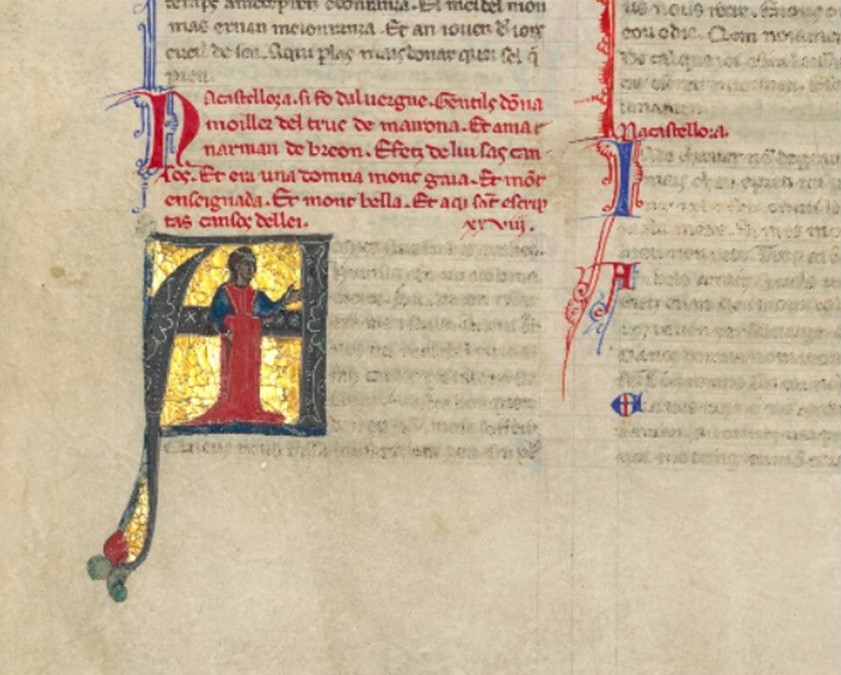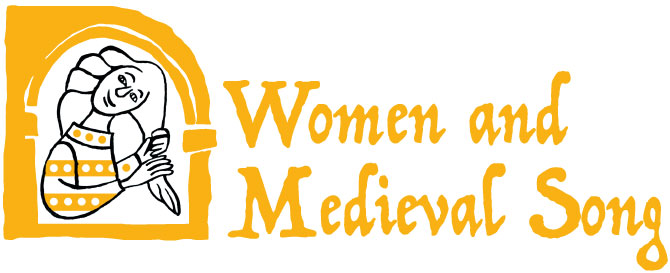The medieval Occitan vidas (‘lives’) serve as mini-biographies of authors; built on a Latin model, they range in length from two sentences to several paragraphs long. Their purpose seems to be to give the audience a sense of the author of a given work and his or her place in the world. The vidas are paired with texts called razos (‘reasons’), explanations of individual lyrics, providing historic or compositional context. Both genres use Occitan lyrics themselves as their source material, the razos especially. The razos take “information” found in the lyrics to explain the narrative of the lyrics, so circular arguments can be expected. We know, though, that there is sometimes sufficient historical accuracy in the vidas to allow them to be used as the basis of modern scholars’ construction of troubadour biographies.

As it happens, 101 vidas have been transmitted to us in medieval manuscripts, describing 109 of the roughly 450 Occitan lyric poets whose names we know, i. e. a mini-biography for roughly one-quarter of the composers and performers in the twelfth- and thirteenth-century Occitan world. In this group, trobairitz, women poet/composers, are proportionally well represented. Accepting the figure of twenty-one named women composers (there is some scholarly debate as to their total number), eleven of whom have a vida or are described in the vida of a male poet, slightly more than half (52%) of these women have a presence in the vida and razo texts.
Only a few of the named trobairitz are the subject of a mini-biography; others are the subject more of a razo than a life story. Still, consideration of these texts as a group allows us to make some observations.
The women are generally portrayed as educated, as noble, and/or as pretty. Their verse, when described, is called good. The authors of the vidas might add that a given woman could compose lyrics well, though some women receive no detailed description at all. The vida authors seem to have had a preference for negative descriptions, but the women poets of Occitania were described only in favorable terms, perhaps an example of the more positive view of women in Occitan culture than in medieval northern France.
It has been suggested that the vida authors chose silence as a way of avoiding a negative description of the trobairitz in their circle. Instead of offering details about a marital dispute, for example, the vida author ignored the whole topic. Rather than say something negative about a given woman, they said nothing at all.
One trobairitz singled out in the vida corpus is Na Tibors, Lady Tibors, whose musical talent is described as “magisterial”. The adjective attached to her, maïstra, is rarely used in the vida texts; only five male poets are considered to have this level of skill. High praise indeed. Though the vida author appreciated Na Tibors, only a few lines of her verse have come down to us, the opening of a poem addressed to her lover or suitor:
Bels dous amics, ben vos puosc en ver dir
qe anc no fo q’eu estes ses desir
pos vos conosc nius pris per fin aman,
ni anc no fo q’eu non agues talan,
bels dous amics, q’eu soven no.us veses,
ni anc no fo sasons que m'en pentes;
ni anc no fo si vos n’anes iratz
q’eu agues joi tro que fosetz tornatz
ni anc...
(Na Tibors, Bels dous amics, ben vos puosc en ver dir, BEdT 440,001)
[Fair, sweet friend, I can truly tell you / I have never been without desire / since I met you and took you as true lover, / nor has it happened that I lacked the wish, / my fair, sweet friend, to see you often, / nor has the season come when I repented, / nor has it happened, if you went off angry / that I knew joy until you had returned, nor ...]
These lines use the same themes as are found in troubadour love poetry — that true love is the source of joy— and demonstrate a mastery of the refrain words “anc no” [nor].
While the lyrics of the trobairitz are often similar in tone to those of their male counterparts, we also have examples of realism, as in a very different song, when a woman considers marriage and pregnancy:
Na Carenza, penre marit m’agenza
mas far infanz cuiz qu’es gran penitenza
que las tetinas penden aval jos
e llo ventrilh es ruet e’noios.
(Alaisina Yselda i Na Carenza, Na Carenza al bel cors avinenz, BEdT 012,001 = 108.001) (There is debate among scholars as to whether this song involves two women: Alaisina Yselda and Carenza; or three: Alais, Yselda, and Carenza.)
[Lady Carenza, taking a husband suits me, / but I think making babies is harsh penance, / for the breasts droop way down, / the belly stretches and gets ugly.]
This degree of realism is rare in medieval Occitan verse and all the more remarkable for that reason.
The vidas and razos remain an important though imperfect source of information about the medieval Occitan literary community; the trobairitz have a firm place in that universe.
Suggested further reading
- Riquer, Martí de (1995): Vidas y retratos de trovadores: textos y miniaturas del siglo XIII. Barcelona: Círculo de Lectores / Galaxia Gutemberg.
